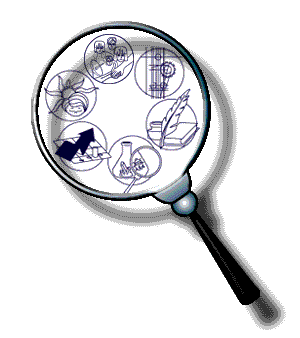
 |
5 definitions found
From The Collaborative International Dictionary of English v.0.48 [gcide]:
modulator-demodulator \mod"u*la`tor-de`mod"u*la`tor\, n.
An electronic device that converts electronic signals into
sound waves, and sound waves into electronic signals, used to
transmit information between computers by the use of ordinary
telephone lines; usually called a {modem}.
[PJC]
From The Collaborative International Dictionary of English v.0.48 [gcide]:
modem \mo"dem\ (m[=o]"d[e^]m), n. [by shortening from
modulator-demodulator.]
An electronic device that converts electronic signals into
sound waves, and sound waves into electronic signals, used to
transmit information between computers by the use of ordinary
telephone lines; also called {modulator-demodulator}; as, the
latest modems can transmit data at 56,000 baud over a clear
telephone line. The speed of transmission of information by a
modem is usually measured in units of {baud}, equivalent to
bits per second.
[PJC]
From WordNet (r) 2.0 [wn]:
modem
n : (from a combination of MOdulate and DEModulate) electronic
equipment consisting of a device used to connect
computers by a telephone line
From Virtual Entity of Relevant Acronyms (Version 1.9, June 2002) [vera]:
MODEM
MOdulator DEModulator
From The Free On-line Dictionary of Computing (27 SEP 03) [foldoc]:
modem
(Modulator/demodulator) An
electronic device for converting between serial data
(typically {EIA-232}) from a computer and an audio signal
suitable for transmission over a telephone line connected to
another modem. In one scheme the audio signal is composed of
silence (no data) or one of two frequencies representing zero
and one.
Modems are distinguished primarily by the maximum data rate
they support. Data rates can range from 75 bits per second up
to 56000 and beyond. Data from the user (i.e. flowing from
the local terminal or computer via the modem to the telephone
line) is sometimes at a lower rate than the other direction,
on the assumption that the user cannot type more than a few
characters per second.
Various data {compression} and error correction {algorithms}
are required to support the highest speeds. Other optional
features are {auto-dial} (auto-call) and {auto-answer} which
allow the computer to initiate and accept calls without human
intervention. Most modern modems support a number of
different {protocols}, and two modems, when first connected,
will automatically negotiate to find a common protocol (this
process may be audible through the modem or computer's
loudspeakers). Some modem protocols allow the two modems to
renegotiate ("retrain") if the initial choice of data rate is
too high and gives too many transmission errors.
A modem may either be internal (connected to the computer's
{bus}) or external ("stand-alone", connected to one of the
computer's {serial ports}). The actual speed of transmission
in characters per second depends not just the modem-to-modem
data rate, but also on the speed with which the processor can
transfer data to and from the modem, the kind of compression
used and whether the data is compressed by the processor or
the modem, the amount of noise on the telephone line (which
causes retransmissions), the serial character format
(typically {8N1}: one {start bit}, eight data bits, no
{parity}, one {stop bit}).
See also {acoustic coupler}, {adaptive answering}, {baud
barf}, {Bulletin Board System}, {Caller ID}, {SoftModem},
{U.S. Robotics}, {UUCP}, {whalesong}.
{Usenet} newsgroup: {news:comp.dcom.modems}.
(2002-05-04)
Powered by Blog Dictionary [BlogDict]
Kindly supported by
Vaffle Invitation Code
Get a Freelance Job - Outsource Your Projects | Threadless Coupon
All rights
reserved. (2008-2025)